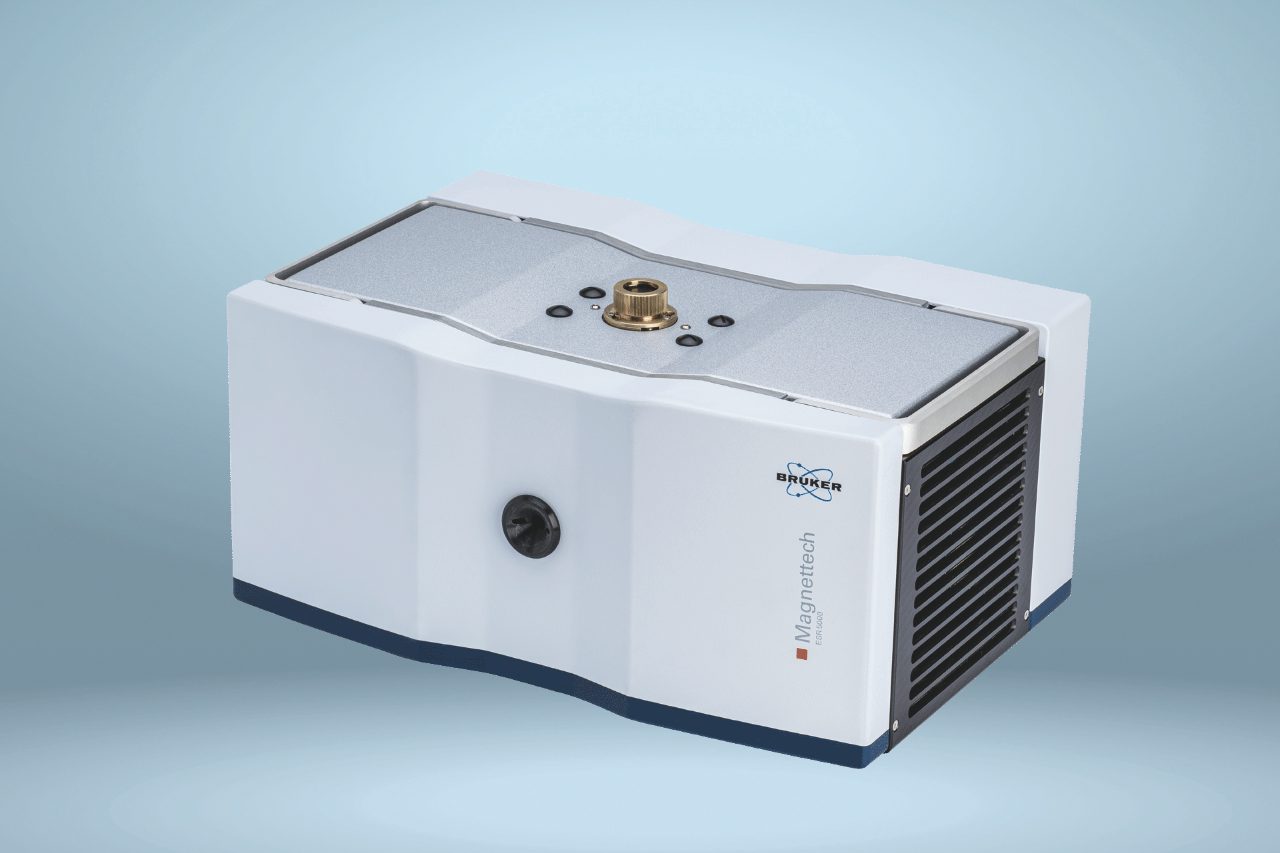

The detection of air pollution through Environmentally Persistent Free Radicals (EPFRs)
The identification and monitoring of free radical generation in particulate matter, along with the analysis of their oxidation performance, has attracted interest from researchers seeking to explore the dangers that air pollution poses in more detail.
Professor Chen Qingcai from Shaanxi University of Science and Technology China and his research group focus on the effects of air pollution on human health. The group studies the chemical composition and source analysis of particulate matter, simulating and conducting environmental effect analysis (EEA) of regional air pollution, and using volatile organic compound (VOC) source control technology.
Key air pollution research
Air pollution represents one of the most complex environmental issues faced by China today. In the past few years, significant results have been achieved in the control of fine particles, while national policy for the next few years is set to focus on coordinated fine particulate matter and ozone management.
Prof. Qingcai states that “Our ultimate goal is not merely controlling air pollution, but rather finding a means to establish a healthy living environment for mankind. Studying the health effects of air pollution and identifying the specific particulate can contribute to the bettering of Chinese people’s health.”
Current research has found that the reactive oxygen species (ROS) produced by particulate matter play a key role in the adverse effects that air pollution has on human health. ROS are highly reactive chemicals formed from oxygen. There are many different types of ROS, the most common of which are superoxide and hydroxyl species. As free radicals containing unpaired electrons, they may deprive protein molecules of electrons when they enter the human body, causing alkylation of the protein when it attaches to the branched chain and resulting in aberrant molecules that can cause cancer.
Recently, research has focused on environmentally persistent free radicals (EPFRs. While normal free radicals have lifespans of only a few milliseconds, EPFRs can last for several months or even years, during which they have a continuous adverse effect on human health. Over the past few years, Prof. Qingcai’s research group has concentrated its efforts on EPFRs, and has discovered that EPFRs are present in large amounts of particulate matter. For example, during a period of severe fog in Xi’an during 2017, the EPFR content in PM2.5 was found to be equivalent to smoking 23 cigarettes per person per day.
The role of EPR in air pollution research
There are a wealth of instruments and devices used in air pollution research. Online instruments such as aerosol chromatographs and organic/elemental carbon analyzers, and offline techniques such as gas chromatography (GC) and Fourier-transform infrared (FTIR) spectrometry are commonly used for particulate matter analysis.
Prof. Qingcai uses electron paramagnetic resonance (EPR) spectrometry, as it is currently the only widely available instrument capable of directly analyzing free radicals.
“Currently, our research group uses the Bruker Magnettech ESR5000 (previously Magnettech MS5000), primarily for content analysis of free radicals,” explains Prof. Qingcai, adding: “The principle, to put it simply, is that when matter with unpaired electrons is subjected to an external magnetic field, energy level splitting will occur.”
At this point, if applying an electromagnetic (EM) wave of a certain frequency in the direction perpendicular to the magnetic field and changing the magnetic field strength to a certain level, unpaired electrons will transition. The signal absorbed during the transition can then be processed by the electronic system to obtain the EPR absorption spectrum. Different types of free radicals correspond to different parameters and produce different spectral lines. Prof. Qingcai has found that “Other free radical analysis methods such as spectrophotometry and fluorescent probes do not work with more complicated samples. Most of them are also indirect analysis methods, leading to suboptimal qualitative and quantitative results.”
In addition to being able to analyze the type and content of free radicals, EPR is non-destructive and leaves original samples intact after analysis, which allows researchers to perform other tests on the same sample. EPR also supports online and time curve analysis of free radicals, which are key advantages.
Identifying EPFRs
The Bruker Magnettech ESR5000 has helped Prof. Qingcai’s team identify new types of particulate matter EPFRs, as he describes: “The ESR5000 helped resolve the problems we were facing in EPFR analysis, allowing our proprietary methods and data processing software to overcome the research bottleneck.”
The research group was the first to propose that the graphene oxide-like matter produced by the high-temperature reactions of particulate organic matter (POM) is the primary mechanism of EPFR generation. The team carried out a series of experiments to verify this theory, which differs from the traditional view that metal oxides are the primary source of EPFRs. Another key result was in the study of primary EPFR sources. Prof. Qingcai explains: “By studying samples from Xi'an throughout the year, we found that combustion sources and atmospheric dust were responsible for most EPFRs in the city’s atmosphere.”
He comments on the value of Bruker’s technical support services: “Any technical problems we experience during the use of the instrument will typically be resolved by Bruker's technical staff and engineers. Bruker is well-known for its technical and operational competence, and we hope that their services continue to improve along with the exchange and cooperation of cutting-edge technologies and application.”
Working with Bruker
The Bruker Magnettech ESR5000 is used globally, in materials and life science research. Prof. Qingcai and his group are pioneering the instrument's use in atmospheric research.
Prof. Qingcai says that they made the choice to use Bruker’s technology by considering quality and service: “At the time, we put forward a series of requirements and technical indicators, which we were able to verify on-site with a prototype. During this process, we also compared the ESR5000 with EPR instruments offered by other companies. By the end of this process, we selected the ESR5000 as it best suited our requirements for technical indicators, cost performance, and services.”
Prof. Chen Qingcai is Associate Professor at Shaanxi University of Science and Technology, China, and graduated with a Sc.D degree from Nagoya University in Japan. Regarded as a top local talent by Shaanxi Province and recognized as an expert by the national government, Prof. Qingcai has published over 30 academic papers and led more than five national projects, including one funded by the National Natural Science Foundation of China.
Future innovation
The study of atmospheric samples often requires several months of continuous analysis, which can be affected by deviations caused by the instrument start-up process. Prof. Qingcai hopes that manufacturers continue to optimize EPR instruments to enhance stability in future models.
The collaboration between researchers and instrument vendors like Bruker is vital for future innovation. Prof. Qingcai comments on the importance of ongoing communication between researchers and R&D specialists: “There were no specific research components or methods for the analysis of particulate matter when we began our research. We hope to work with Bruker to develop online analysis tools and technologies, and to optimize the automatic analysis functionality of data processing software.”
Note: When Magnettech EPR was acquired by Bruker, MS5000 was renamed to Bruker Magnettech ESR5000.
About Bruker Corporation
Bruker is enabling scientists to make breakthrough discoveries and develop new applications that improve the quality of human life. Bruker’s high-performance scientific instruments and high-value analytical and diagnostic solutions enable scientists to explore life and materials at molecular, cellular and microscopic levels. In close cooperation with our customers, Bruker is enabling innovation, improved productivity and customer success in life science molecular research, in applied and pharma applications, in microscopy and nanoanalysis, and in industrial applications, as well as in cell biology, preclinical imaging, clinical phenomics and proteomics research and clinical microbiology.
For more information, please visit: www.bruker.com.
